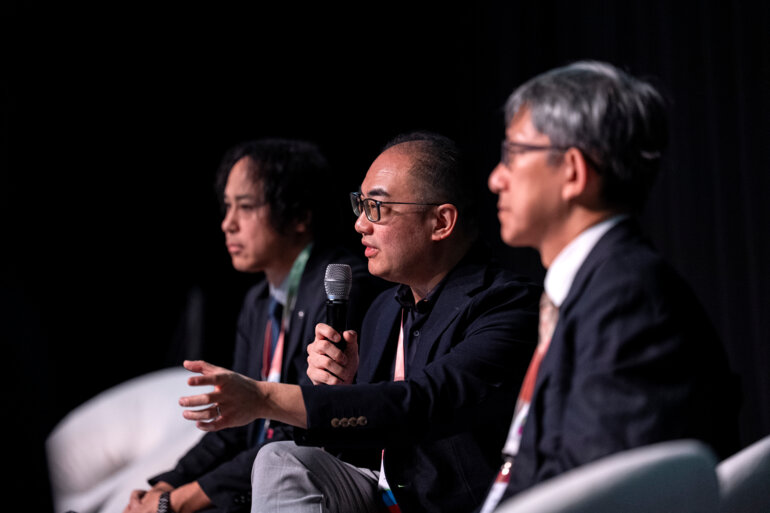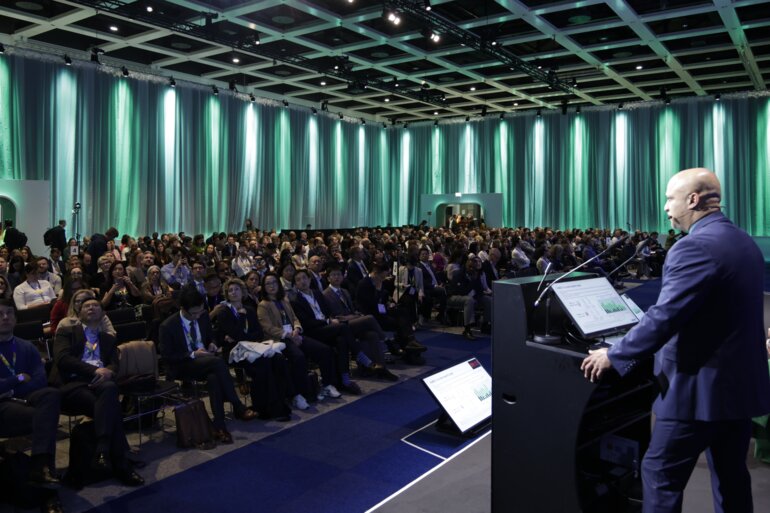With the growing use of real-world evidence (RWE) to support regulatory approvals of new anti-cancer medicines in Europe and the USA, can this type of research ensure greater inclusion of women, the elderly, diverse ethnic groups, those with rare cancers and other under-represented populations in oncology studies?
It has been long debated whether real-world evidence (RWE) obtained from real-world data (RWD) should be used to inform research in oncology, and perspectives are still mixed despite signs of a paradigm change.
Although randomised controlled trials (RCTs) remain the gold standard for testing the safety and efficacy of cancer and other new medicines, regulatory authorities such as the European Medicines Agency (EMA) and the US Food and Drug Administration (FDA) increasingly accept RWE to support some licensing decisions (Clin Ther. 2020 May;42(5):926-938).
Growing interest in RWE in oncology is focused on its potential to speed up access to promising new treatments (Clin Pharmacol Ther. 2019 Jul;106(1):36-390) and for including patients who are often excluded from RCTs because of their gender, age, ethnicity or comorbidities, or the rarity of their cancer.
In an early example of the use of RWE to accelerate drug approval, complete remission (CR) data from a single-arm Phase 2 study were compared with CR data from RWE historical controls for the 2014 FDA decision in favour of blinatumomab treatment for Philadelphia-negative relapsed and/or refractory B cell- precursor acute lymphoblastic leukaemia (Clin Cancer Res. 2015 Sep 15;21(18):4035-9). A subsequent Phase 3 RCT confirmed the overall survival (OS) advantage of the new agent (N Engl J Med. 2017 Mar 2;376(9):836-847).
However, some oncologists are concerned about the quality of historical control data that have been used for some other accelerated approvals and the delays seen in completing some confirmatory Phase 3 trials (Nat Rev Clin Oncol. 2020 May;17(5):271-272).
“Real-world evidence has a valuable role in clinical research but it is not a substitute for randomised controlled trials", says Dr Bishal Gyawali, Queen’s University, Kingston, Ontario, Canada.
With real-world evidence, we cannot control all the unknowns and there are problems such as selection bias and variations in timepoints for data collection
He also points out that using surrogate endpoints instead of overall survival (OS) in cancer studies may not speed up new drug approvals as much as expected, as shown by an analysis of FDA oncology approvals and their drug registration trials for 2006-2017 (JAMA Intern Med. 2019 May 1;179(5):642-647).
“The analysis estimated that use of progression-free survival instead of overall survival as an endpoint saved 11 months of trial time, and using response time saved 19 months compared to overall survival. There was a difference but using surrogate endpoints did not save the five or 10 years that some people may expect,” says Gyawali.
Despite his reservations about increased use of RWE to support new drug approvals, Gyawali says that it does have an important place in safety and post-marketing studies in oncology.
“RCTs cannot fully capture all the safety signals of a drug because the patient numbers in these trials are too small. A serious safety issue that occurs in 1 in 1000 patients may not happen in an RCT of 500 patients, but it would come out as part of RWE involving millions of patients,” he points out.
He also supports increased use of RWE studies in their more traditional role after a drug has been approved.
“This can show whether the benefits seen in clinical trials extend to a wider population, some of whom may have been excluded from RCTs because of comorbidities. These patients may tolerate treatment less well than those in RCTs and so the overall outcomes may be quite different,” says Gyawali.
The use of RWE in resource constrained settings
According to Dr Jyoti Bajpai, Tata Memorial Hospital, Mumbai, India, who specialises in the treatment of rare cancers, real-world cancer studies are particularly useful for guiding clinical practice in low- and middle-income countries (LMICs) with limited budgets or facilities.
For example, data from a prospective study of a dose-dense doxorubicin, cisplatin and ifosfamide (OGT-12) sequential regimen in treating naïve patients with non-metastatic osteosarcoma, carried out by Bajpai and colleagues, have simplified patient care (Eur J Cancer 2017 Nov;85:49-58). Response and survival rates were comparable with regimens including high-dose methotrexate (HDMTX), without the need for complex administration and monitoring procedures.
“The OGT-12 regimen can be delivered in an outpatient setting without the need for the stringent hydration control procedures that are required with high-dose methotrexate, making treatment much more cost-effective,” says Bajpai. “We produced real-world data in this rare cancer that are widely applicable.”
Results of another real-world study carried out by the Mumbai group in the much more common hormone receptor (HR) positive metastatic breast cancer proved particularly relevant for Indian patients poorly represented in international studies (Indian J Cancer 2016;53(3):464-467). This showed that 31% of Indian patients treated with everolimus combined with tamoxifen, aromatase inhibitors or fulvestrant required a dose reduction, usually because of toxicity, and hyperglycaemia was over twice as common as in international studies.
“This kind of study is very important because it showed that reduced or alternate day dosing was needed by many patients and, as diabetes is quite a big problem in India, we as local oncologists need to be aware of the hyperglycaemia risk in patients with breast cancer treated with everolimus,” she says.
Bajpai proposes that reference centres should be established in LMICs where clinicians with appropriate expertise can determine criteria and review protocols for proposed trials, and where they differentiate between research that requires an RCT or suitable for real-world studies.
It is true that RCTs provide more robust evidence but they are expensive, have long lead times, require multiple visits from patients, and results cannot easily be extrapolated to the patients we see in practice, such as the elderly and those with comorbidities
Bajpai adds: “A wheel-and-spoke approach between reference centres and research institutes would facilitate dialogue with investigators to ensure robust data are generated in a short time that are widely applicable. Also, it would help with training and problem solving to ensure that real world studies are the best they can be.”
The need for high-quality evidence in rare cancers
On top of the shortcomings of RWE for supporting new cancer drug approvals, no one is saying that RCT design is perfect.
In a recent paper, Gyawali and others suggested that overly restrictive RCT designs and limited distribution of investigation sites are at the root of delays in access to novel cancer therapies (Nat Rev Clin Oncol. 2020 May;17(5):271-272). They expressed concerns that wider use of RWD in regulatory decisions may not provide the strength of evidence that patients often excluded from RCTs, such as men with breast cancer, deserve.
“Men with breast cancer should be treated on the basis of RCT data just like women. It is very easy to come up with reasons why breast cancer trials cannot be done in men, but RCTs have been done in cancers with a similar incidence to male breast cancer, such as advanced adrenocortical carcinoma and desmoid cancers,” Gyawali explains.
Although less than 1% of breast cancer cases are in men, this still means that many thousands of the total 1.7 million patients diagnosed with this malignancy worldwide per year are male.
“Men with breast cancer should be included in RCTs along with women, even if there are quite small numbers. If small numbers of men had been included in trials of each of the new CDK4/6 inhibitors, there would now be a useful body of high-quality outcome data in men with breast cancer. Alternatively, a trial specifically in male breast cancer could have started as soon as the first CDK4/6 inhibitor was approved, with enough male patients brought together quite quickly through a global collaboration,” says Gyawali.
“This principle holds true for all rare cancers, and not simply breast cancers in males. Patients with rare cancers do not deserve lower quality of evidence simply because their cancer is rare,” he adds.
Bajpai agrees that all patients deserve treatment based on high quality evidence. However, she suggests that this does not negate the importance of RWD, especially in rare cancers such as sarcomas, pregnancy associated cancers or adolescent and young adult cancers when performing RCTs is extremely challenging.
She acknowledges the methodological shortcomings of RWE but suggests that RWE is useful in indicating the need for RCTs into possible treatments and that, in some cases, real-world studies and RCTs should be done in parallel.
“By doing these studies at the same time, we would produce the data needed for regulatory purposes and for daily clinical practice as rapidly and in a as cost-effective as possible way. Meaningful inferences can be derived from good quality prospective studies which help to improve patient care worldwide,” she says.
Learning from COVID-19 trials to improve RCT design
Gyawali suggests lessons for improving RCT design can be learned from drug trials during the COVID-19 pandemic. He points out that RCTs were essential in showing that treatments such as hydroxychloroquine, azithromycin, plasma exchange and zinc were not effective against COVID-19.
“Real-world experience suggested that these options could be helpful but rapidly designed and completed RCTs showed this was not the case. If these treatments had been approved on the basis of real-world evidence, we would have wasted huge amounts of money and resources on giving them to patients who would not have benefitted,” he says.
The speed of RCTs during the pandemic, largely due to the reduced administrative burden, may have long-term implications for RCT design. Faster more efficient RCTs could undermine the argument for more RWE as a time-saving solution for getting important new medicines to patients.
“There is no reason why we cannot be as innovative with our designs for RCTs in oncology,” concludes Gywali.







